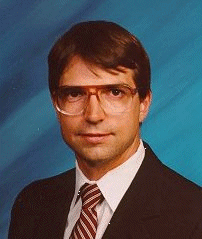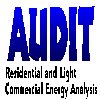UTILITY USES SOFTWARE TOOLS FOR ENERGY CONSERVATION AND PROFIT©
by Bill Smith, president of Elite Software

 Increasing competitive pressures in today’s utility industry mean that most energy providers must constantly search for new ways to keep their energy products low priced and thus attainable for their customers. For most, conservation of energy must occur even as consumers find many new ways to use energy. Michael Armstrong is a Key Account Manager in the Marketing and Economic Development Department for Pennsylvania Power and Light Co.
Increasing competitive pressures in today’s utility industry mean that most energy providers must constantly search for new ways to keep their energy products low priced and thus attainable for their customers. For most, conservation of energy must occur even as consumers find many new ways to use energy. Michael Armstrong is a Key Account Manager in the Marketing and Economic Development Department for Pennsylvania Power and Light Co. In business for seventy five years, PP&L serves central eastern Pennsylvania with over one million residential customers.
In business for seventy five years, PP&L serves central eastern Pennsylvania with over one million residential customers.
Armstrong observes, “Because we are a single electric utility and not a joint utility with gas, we only promote electric heat. Our competition are oil and gas and strong conservation programs are important in keeping us competitive. Our customers are increasingly resistant to paying for ever more costly generating plants. Very simply, conservation keeps our electricity affordable while helping us avoid or postpone construction of expensive new generating plants. To this end, we have created highly successful contractor training programs that use good commercially available computer programs, like those from Elite Software, for the precise sizing of energy efficient HVAC systems.”

One program long established by PP&L is a heat pump organization to promote the proper installation of heat pumps. Integral to the program’s high installation standard are properly calculated load calculations. Armstrong remembers, “At the beginning, we found was that most contractors did not do a heat loss and heat gain. To encourage them, over the years we developed and fostered the use of manual J programs, like Elite’s RHVAC program, for heat loss and heat gain. Our training schools have created a good foundation for the precise calculation of heat loss and heat gain instead of relying on guesswork and rules of thumb.”
“At the same time, we developed a thermal integrity program, called Comfort Home, that greatly reduced the infiltration rate on homes. As a result of tightening up homes and more precisely designed equipment, we were able to reduce equipment sizes for thousands of homes served in our area. We’ve gotten dramatic benefits. For example, twenty years ago one houses used the same amount of electricity as four homes do now. With Elite’s programs, systems are properly designed for maximum efficiency instead of being oversized.”
Armstrong adds that they also use Elite’s Audit program for residential energy analysis. He explains, “With AUDIT, our contractors have a great tool to promote our Comfort Home program and show the homeowner how using our electricity reduces their energy costs when compared to oil and gas. It gives us an unbiased third party comparison of the different fuels available. The software shows that our calculations are based on accepted industry standards for cost analysis. As a result, this gives us a lot of credibility and is convincing to the home owner. AUDIT can clearly compare different energy scenarios and persuasively show the cost benefits of electric heat.”

“We are also excited about the new upcoming Window’s version of AUDIT and have been active is shaping that program as a beta tester. Elite has been very helpful in accepting our ideas for program design and modifications,” he adds.
PP&L also began a ground source heat pump promotion program in 1991. Armstrong notes this is one of the most energy efficient forms for heating and cooling. “It removes winter peaking situations that often exist with other types of heating systems. If the heat pump is sized properly, we don’t need any backup heat. Because of our success with Elite’s other programs, we also use their earth coupled loop sizing program (ECA) to accurately calculate pipe loop lengths for a given heat pump. We use ECA together with RHVAC and AUDIT to effectively promote the ground source heat pump program.”
Armstrong admits he is pleased with the success of PP&L’s programs. He concludes, “ When heat loss and heat gains are done properly we typically have a reduction in equipment size by about 3/4 of a ton. This together with our Comfort Home Program means we see a 10kw reduction of backup heat. In the end, our customers are happy with consistent low energy prices and we’re happy with good sales using our existing generating facilities.”
 Mr. Smith welcomes your email about this article. - email
Mr. Smith welcomes your email about this article. - email
Copyright ©
Elite Software Development, Inc., webmaster@elitesoft.com
 Increasing competitive pressures in today’s utility industry mean that most energy providers must constantly search for new ways to keep their energy products low priced and thus attainable for their customers. For most, conservation of energy must occur even as consumers find many new ways to use energy. Michael Armstrong is a Key Account Manager in the Marketing and Economic Development Department for Pennsylvania Power and Light Co.
Increasing competitive pressures in today’s utility industry mean that most energy providers must constantly search for new ways to keep their energy products low priced and thus attainable for their customers. For most, conservation of energy must occur even as consumers find many new ways to use energy. Michael Armstrong is a Key Account Manager in the Marketing and Economic Development Department for Pennsylvania Power and Light Co. In business for seventy five years, PP&L serves central eastern Pennsylvania with over one million residential customers.
In business for seventy five years, PP&L serves central eastern Pennsylvania with over one million residential customers.
